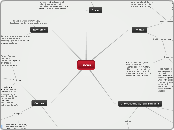Incas
Social
Families/Gender
Women were taken as concubines for the inca, others selected as servants at temples ("Virgins of the Sun"), women worked in fields, wove cloth, and cared for household, property rights within ayllus and among nobility passed through both males and females, women also may have served as leaders of ayllus (uncommon) but inequality reinforced with Inca emphasis on military virtues
Men and women cooperated closely, also shown through religion (gods and goddesses), but ideology of gender equality contrasted with gender hierarchy seen through dominanace of Inca state over its subjects
Most men were peasants or herders
Political
Political Groupings
Rulers
Pachacuti- ruler (inca) from 1438 to 1471, lauched series of military alliances and campaigns, brought Incas control of whole area from Cuzco to shores of Lake Titicaca
Topac Yupanqui- son and succesor to Pachacuti, conquered northern coastal kingdom of Chimor by seizing irrigation system, extended Inca control into southern are of modern Ecuador
Huayna Capac- ruled from 1493 to 1527, consolidated previous conquests and suppresed rebellions on frontiers, by his death the new Inca empire was called Twantinsuyuundefined
Local rulers, curacas, allowed to maintin positions, were given privileges by inca in return for their loyalty
Yanas- class of people removed from their ayllus, served permanentl as servants, artisans, or works for Inca or nobility
Ayllu seperated nobilty from peasantry, different classes
Inca Government
Took tribute in form of work, communities expected to take labor turns (mita) working on state and church lands, sometimes on building projects or in mining
Empire was organized with complex system of roads (also included bridges and causeways), waystations (tambos) placed about a day's walk apart to serve as inns, storehouses, and supply centers for Inca army
Interactions w/ Environment
Location
Andes in South America, by 1527 stretched from modern Colombia to Chile, eaastward across Lake Titicaca and Bilivia to northern Argentina

Like other Mesoamericans, did not develop strong immunities to diseases that would arrive from Europe and end up with devastating results
Did not have access to animals such as horses, cows...
Economic
Similar to other groups such as Aztecs, depended on sedentaryagriculture and used irrigation systems
Trade and markets weren't very developed, neither was merchant class
Cultural
Religion
Temple of the Sun (below)- constructed in Cuzco, centre of state religion, mummies of past incas stored in confines

Huacas- Holy shrines, included mountains, stones, rivers, caves, tombs, and temples, at these places prayers and sacrifices (animals, goods, humans) were offered
Tools/Technology
Did not use wheel, but also had no system of writing
Quipu- system of knotted strings used to record numerical and other information, worked like abacus and used by Incas to take censuses and keep financial records
Wove high-quality cloth for court and for religious purposes, Incas provided wool while each household required to produce cloth, was great Andean art form with political and religious significance
Skilled with metal, used gold and silver as well as copper and bronze for art and tools
Customs
Deceased rulers were mummified and treated as intermediaries with gods, paraded in public during festivals, offered food and gifts, consulted on important matters by special oracles (in a way, still kept alive even after death
Practiced royal split inheritance, all political power and titles of ruler went to successor while palaces, wealth, land, and possesions remained in hands of his male descendants, used to support cult of dead inca's mummy
Spoke Quechua language, intentionally spread by Incas to integrate empire
